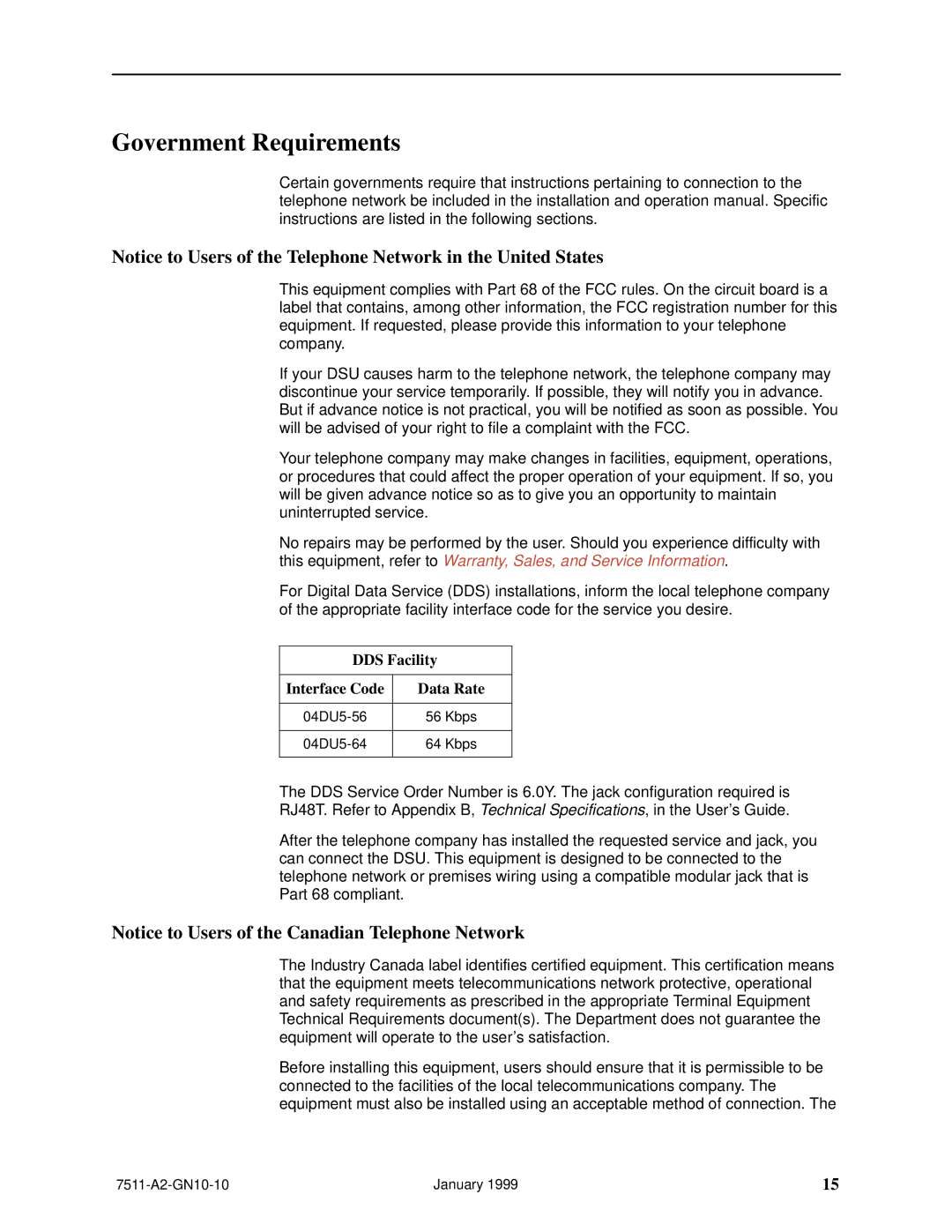
Government Requirements
Certain governments require that instructions pertaining to connection to the telephone network be included in the installation and operation manual. Specific instructions are listed in the following sections.
Notice to Users of the Telephone Network in the United States
This equipment complies with Part 68 of the FCC rules. On the circuit board is a label that contains, among other information, the FCC registration number for this equipment. If requested, please provide this information to your telephone company.
If your DSU causes harm to the telephone network, the telephone company may discontinue your service temporarily. If possible, they will notify you in advance. But if advance notice is not practical, you will be notified as soon as possible. You will be advised of your right to file a complaint with the FCC.
Your telephone company may make changes in facilities, equipment, operations, or procedures that could affect the proper operation of your equipment. If so, you will be given advance notice so as to give you an opportunity to maintain uninterrupted service.
No repairs may be performed by the user. Should you experience difficulty with this equipment, refer to Warranty, Sales, and Service Information.
For Digital Data Service (DDS) installations, inform the local telephone company of the appropriate facility interface code for the service you desire.
DDS Facility
Interface Code | Data Rate |
|
|
56 Kbps | |
|
|
64 Kbps | |
|
|
The DDS Service Order Number is 6.0Y. The jack configuration required is
RJ48T. Refer to Appendix B, Technical Specifications, in the User's Guide.
After the telephone company has installed the requested service and jack, you can connect the DSU. This equipment is designed to be connected to the telephone network or premises wiring using a compatible modular jack that is Part 68 compliant.
Notice to Users of the Canadian Telephone Network
The Industry Canada label identifies certified equipment. This certification means that the equipment meets telecommunications network protective, operational and safety requirements as prescribed in the appropriate Terminal Equipment Technical Requirements document(s). The Department does not guarantee the equipment will operate to the user's satisfaction.
Before installing this equipment, users should ensure that it is permissible to be connected to the facilities of the local telecommunications company. The equipment must also be installed using an acceptable method of connection. The
January 1999 | 15 |
